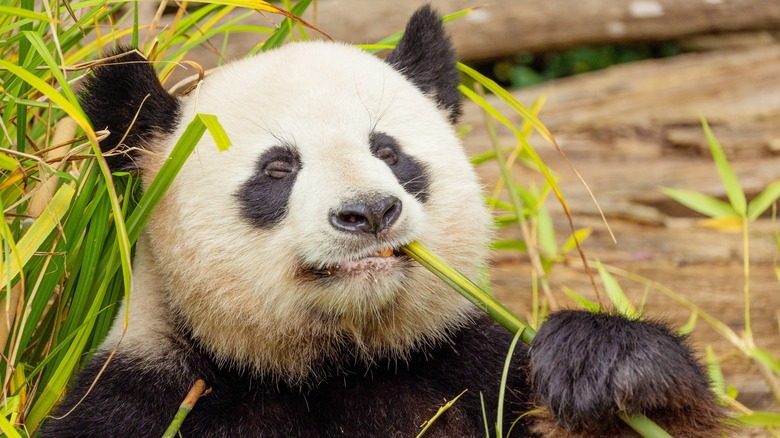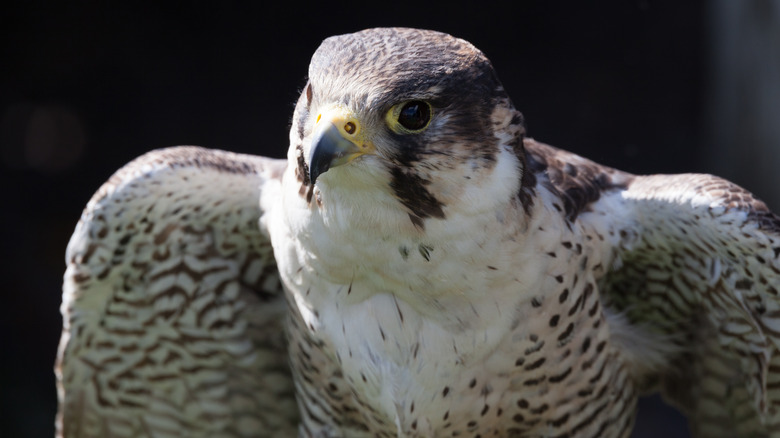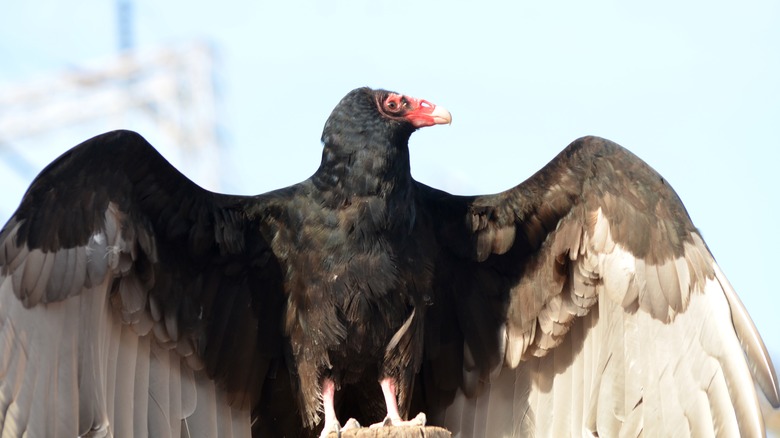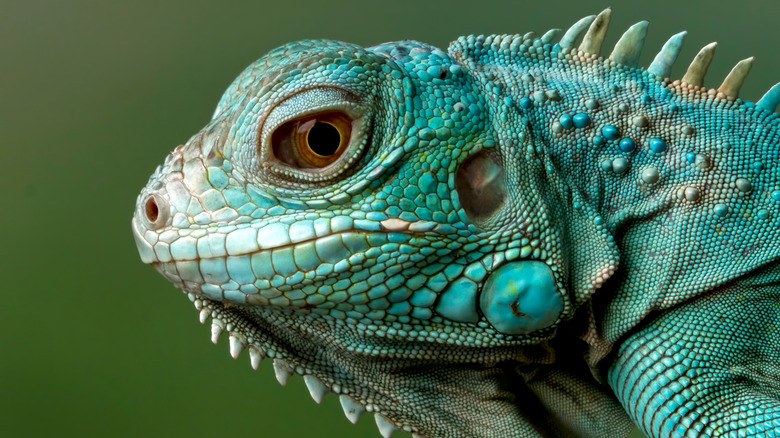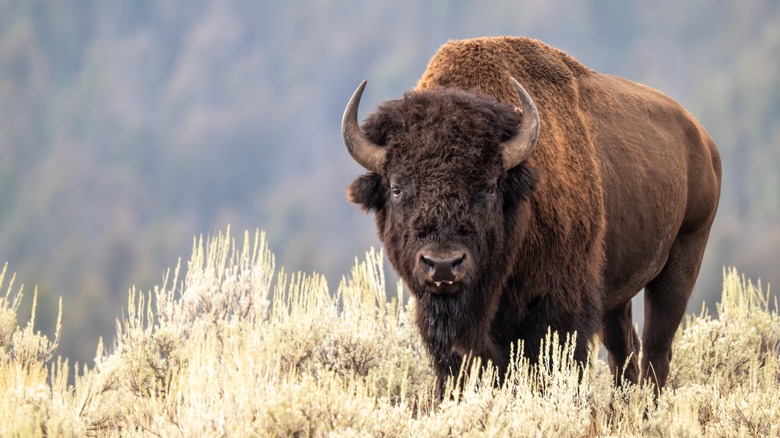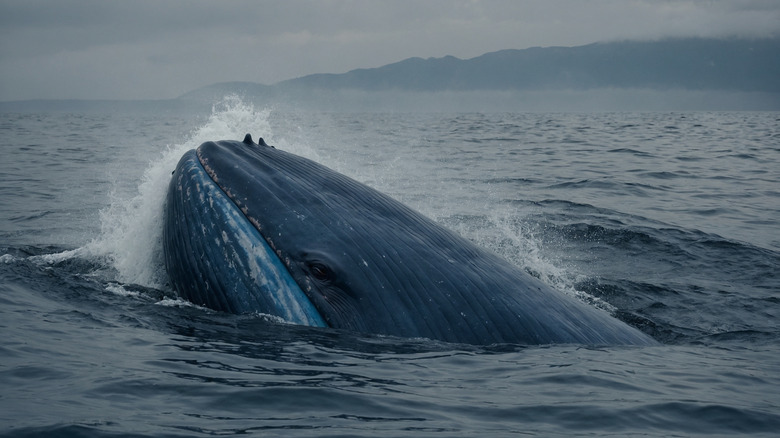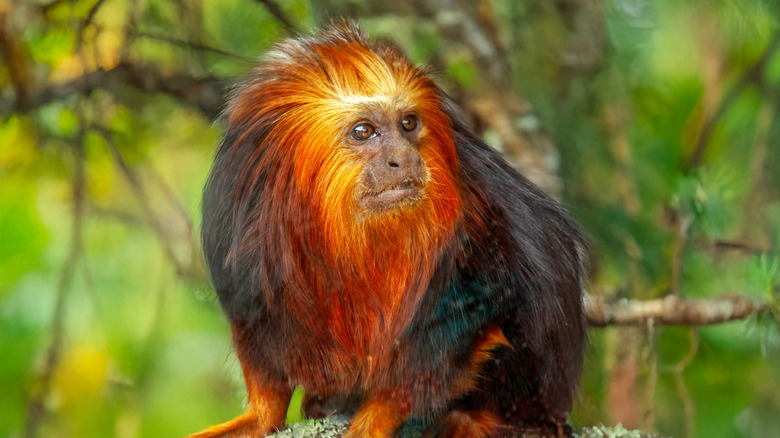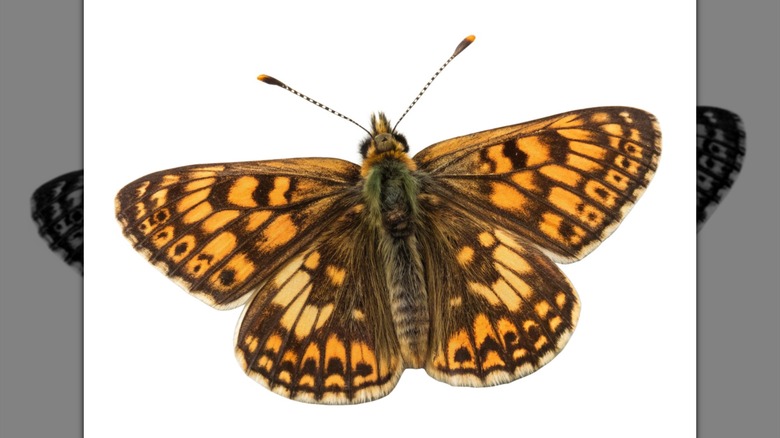11 Animal Species Scientists Saved From The Brink Of Extinction
According to the World Wildlife Fund, as much as 60% of the animal population of Earth has disappeared between 1970 and 2014. This shocking statistic is in no small part down to human interference, with poaching, habitat destruction, and environmental issues such as pollution all playing a part. This dire situation means that many species are facing the ultimate threat: total extinction.
To date, almost 50,000 species are threatened with extinction, according to the International Union for Conservation of Nature (IUCN). While this number is concerningly high, there may be hope for some of them, as threat of extinction does not mean that a species has no chance of survival. Several species of animals have been saved in recent decades from the brink of extinction, thanks in large part to the amazing efforts of conservation teams across the United States and worldwide. From enormous whales to tiny butterflies, these 11 animal species have been saved from the brink of extinction and given a huge second chance.
Peregrine falcon
The peregrine falcon enjoys minor celebrity status as the world's fastest bird, reaching speeds of up to 186 miles per hour while diving, but the extraordinary birds nearly disappeared completely from the United States during the 1960s. They were placed on the endangered species list in 1970, and efforts to protect the wild population began.
One of the major factors in the decline of peregrine falcon numbers was the introduction of the agricultural chemical dichlorodiphenyltrichloroethane (DDT). This particular insecticide has a huge effect on food chains, being absorbed into the soil and affecting animals eating the insects and other creatures living in close proximity. In turn, this affected secondary predators, including birds of prey such as the peregrine falcon. The most devastating effect was the issues it caused with the eggs laid by females. The shells began to thin as a result of DDT poisoning, meaning that the eggs couldn't cope with the weight of the parents sitting on the eggs to keep them warm. The peregrine falcon population plummeted, but in 1970, the Peregrine Fund was set up in an attempt to save the birds from disappearing entirely.
In the 25 years that followed, the fund, led by Tom Cade at Cornell University, bred the falcons in captivity, releasing more than 4,000 of them into the wild over the years. Finally, in 1999, the birds were officially removed from the Endangered Species List in the U.S., and they are now on the "Green List," an indication that their population status is no longer a concern. With the banning of DDT in the United States in 1972, the population has thrived thanks to the successful conservation efforts, and at least 23,00 birds now live in the U.S. alone.
Sea otters
If you have ever seen a photo of sea otters swimming hand in hand while they sleep, you will already know that they score highly in the cuteness stakes. Unfortunately, being attractive in the animal kingdom is often a curse, and these aquatic mammals were hunted almost to extinction for their beautiful, thick fur prior to the start of the 20th century. The International Fur Seal Treaty established in 1911 went a long way to saving the species, and preventing the untold disaster their extinction could have caused throughout the ecosystem.
Sea otters are a keystone species, meaning that they have a larger than expected effect on other organisms within a particular ecosystem. If the otter population had continued to decline to critical levels, the effect on the animals and plants within their marine ecosystem would have been devastating. Fortunately, last century proved a more stable one for sea otters than the few that preceded it, and in 1972, the creation of the U.S. Marine Mammal Protection Act went a large way to restoring their numbers. There are now thought to be around 25,000 sea otters in the United States, making them one of the biggest conservation success stories of the 20th century.
Californian condor
The Californian condor is the largest bird in North America, but in the 1980s, the population of these enormous creatures dropped dangerously close to total extinction. In the '80s, there were only 22 birds remaining, despite the resilient birds having survived the latest of Earth's five major mass extinction more than 5,000 years ago. Condors are vultures, meaning they eat animals that are already dead, and it is thought that lead from bullets in the carcasses has led to significant health issues.
Though protected since the 1960s, the condor population continued to drop until its perilous low in 1982. At this point, the controversial decision was made to remove all remaining Californian condors from the wild to protect the species from disappearing entirely. After breeding them in captivity for two decades, the first condor chick was born in the wild in 2003, and by 2008, the wild population overtook those in captivity — a huge step in the conservation challenge. There are now more than 500 Californian condors, with around two thirds of them in the wild. Though the threat of lead poisoning still looms large, the massive increase in numbers in the past 50 years means that the future looks brighter for our country's largest birds.
Blue iguana
Found only in the Cayman Islands in the Caribbean, the blue iguana was in big trouble as a species at the turn of this century, with less than 30 iguanas alive in the wild. There were many factors putting the survival of this species at risk, with the most devastating being the presence of wild cats and feral dogs as predators, as well as a dwindling habitat. Their unique and attractive appearance also made them a target for the now-illegal pet trade, with some being sold for as much as $1,500. Desperate measures were required — involving removing the eggs from the wild — to ensure the survival of this beautiful animal.
Starting in the early 2000s, conservationists began removing blue iguana eggs from their nests and incubating them for the necessary 72 days until they hatched. This kept them safe from invasive species and predators, and they were released back into the wild a few years later. The project has been a huge success to date, and more than 1,200 blue iguanas have been released into their natural habitat in the Cayman Islands. This 40-fold increase in iguana numbers means that blue iguanas have now taken a step up from critically endangered to simply endangered, according to the IUCN, giving hope that the world's rarest iguana will stick around for years to come.
American bison
American bison may seem ubiquitous in our country nowadays, but 150 years ago, they were hunted close to extinction. At the lowest point, only 325 bison remained, and a conservation program was launched to save the species.
Though buffalo and bison are often mistakenly thought to be the same animal, it was the American bison which was recently designated as our national mammal, and it has held an important place in this country for centuries. Native Americans used the enormous mammals for meat and shelter, but huge numbers of them were intentionally destroyed by settlers trying to gain the high ground on native populations. It is thought that between 1872 and 1874, more than 5 million bison were slaughtered in just that short three-year time span.
Thankfully, the American Bison Society, set up in 1905 and heavily supported by Theodore Roosevelt, succeeded in its mission to stabilize the bison population. By the end of that decade, there were more than 1,000 in the United States, and today, that number has reached a very healthy 500,000, though this is still a fraction of the estimated 60 million that used to roam the land back in the 1500s.
Blue whale
As the largest ever creature to have graced our planet, you would think that the blue whale would be better equipped than most to avoid extinction. However, the human race has taken it pretty close due to industrial whaling that's taken place during the last century, and their numbers are still worryingly low, despite the conservation efforts that have saved them from disappearing completely.
The International Whaling Commission was set up after the Second World War to address the problem of commercial whaling, with almost 150,000 blue whales being caught during the 1930s. The IWC banned the hunting of blue whales in the mid-1960s, and it issued a moratorium on all commercial whaling in 1982 in order to prevent total extinction of the species. While the conservation measures may have averted total disaster for the blue whale, its numbers are still worryingly low due to a number of different factors, including reduced krill availability, rising temperatures, and the resulting disappearance of sea ice.
Golden Lion Tamarins
The Golden Lion tamarin is a striking monkey that lives exclusively in Brazil, and as with many beautiful, unusual animals, the human race has managed to drive the species to the brink of extinction. Starting as far back as the 16th century, these monkeys with their radiant lion-esque manes were captured for the pet trade, leaving just 200 of them in the wild by the 1970s. Loss of habitat has also been a major factor for the survival of the Golden Lion tamarins, as deforestation has decreased their living space dramatically, not only cutting it down to a small fraction of what was previously available, but also heavily fragmenting their habitats.
In 1992, a Brazilian conservation effort known as Associação Mico-Leão-Dourado was set up with the aim of protecting the species from extinction and helping to increase its population. Over the last 40 years, the groups has focused on protecting what remains of the forest and making it suitable for a Golden Lion tamarin colony to thrive. The most recent estimates suggest that the population numbers nearly 5,000, meaning that the species is now considered stable rather than endangered.
Giant Panda
The giant panda has been subject to one of the most famous global attempts to save the species from extinction. By the mid-1970s, a census suggested there were only 1,100 wild pandas, prompting the Chinese government to up their conservation efforts. One of the major issues for survival of the panda species is their very limited diet. Giant pandas consume only bamboo, and they need enormous amounts of it to keep them nourished, as much as 40 pounds per day. However, their bamboo-rich habitats have declined over the last couple of centuries, largely due to human activity, meaning that even with successful breeding programs, increasing the wild population with so little suitable habitat will be a challenge.
But the difficulty with breeding pandas in captivity is their insanely short fertile window. Female pandas ovulate only once per year, leaving a brief mating window of just a few days every spring. This has led to media fascination in zoos across the world, as everyone waits on tenterhooks to find out if the panda couple will take advantage of their short breeding period. This tiny window of opportunity means that the giant panda can't recover as quickly from the poaching and environmental issues that have decimated the species.
That said, though progress is slow, between 2005 and 2015, the wild panda population increased by more than 15%, resulting in their status being downgraded from endangered to vulnerable the following year. The panda's plight has led to it being a beloved mascot for conservation worldwide — and of course the logo for the World Wildlife Fund — and their recovery, while slow, suggests that the significant measures that have been put in place to protect them have been effective.
Chequered skipper butterfly
The Chequered Skipper butterfly was once a common sight in England, but it became extinct there in the mid-1970s, with a small population surviving north of the border in Scotland. The main factor that led to the butterfly's disappearance was the replacement of the trees that had previously grown in the forest, exchanging them for thick conifers. This darkened the environment within the woodland and drastically reduced the bright, open space in which the Chequered Skipper thrives.
But following the announcement of a butterfly emergency, a unique conservation effort began in 2018. The first step in the conservation project was to improve the forests to create more natural light and widen the paths between groups of trees. Once the environment had been improved, more than 100 butterflies were transferred from Belgium to Rockingham Forest in central England, in the hope they would breed and increase the population within the woodlands.
Interestingly enough, a unique feature of the Chequered Skipper allowed scientists to monitor the success of the project without invasive methods. Every individual butterfly has a unique wing pattern that distinguishes it from all others, allowing conservationists to track the population without capturing them and marking them, which is the usual procedure. As of 2024, 350 unique patterns have now been identified, proving that the fragility of this species could be bolstered by a careful (and intentional) change in environment, restoring the woodlands in which the butterfly had once flourished.
Bald eagle
In 1782, the bald eagle was adopted as the unofficial national bird of the United States (though it took until 2024 for that to become law) but in the 1960s, the birds came dangerously close to extinction. There were thought to only be 412 nesting pairs in the 1950s, but thanks to a very successful conservation effort, the bald eagle population has made a significant recovery since then.
Like many other birds in the mid-20th century, bald eagles were badly affected by the use of DDT. The thinning of eggshells put the species at serious risk, but the 1970s brought better news for them. The Bald and Golden Eagle Act granted the species stricter protections in 1972, and DDT was banned in the same year. In the two decades that followed, captive breeding and selective reintroduction to the wild has allowed the population to recover, and in 1995, the species was listed as only "threatened" by the ESA. The most recent estimate suggests that more 300,000 bald eagles are now present in the U.S., evidence of a remarkable conservation effort.
Greater one-horned rhino
The population of greater one-horned rhinos was teetering on the brink of extinction during the 19th century. As the largest species of rhino, the greater one-horned rhino found itself the target of poaching, both for sport and for its prized horn. In particular, the use of the horn in ancient remedies for a wide range of illnesses, ranging from fevers to cancer, makes it an incredibly valuable acquisition. Habitat loss has also been an issue over the years, as humans competed for the fertile soil from the rhino's habitat, even bringing the two species into conflict on a number of occasions over the years. As a result, the numbers of the species in India and Nepal were even thought to drop as low as 200 by the start of the 20th century, but protection measures have seen the population now rebound to around 4,000 individuals.
The conservation effort has taken a multi-pronged approach to tackle the main threats facing the rhino. Anti-poaching patrols have worked well, giving the rhino population a chance to slowly recover. Conservation efforts have also focused on supporting farmers to ensure their prosperity without needing to further encroach on the rhinos' land, while also encouraging those farmers to plant crops that would keep the rhinos away, decreasing the likelihood of human-rhino conflicts. The success of these efforts has led to the greater one-horned rhino no longer being endangered, and although illegal poaching for their horns is still a threat, the future is looking much more promising for this species that was on the brink of extinction not so long ago.
